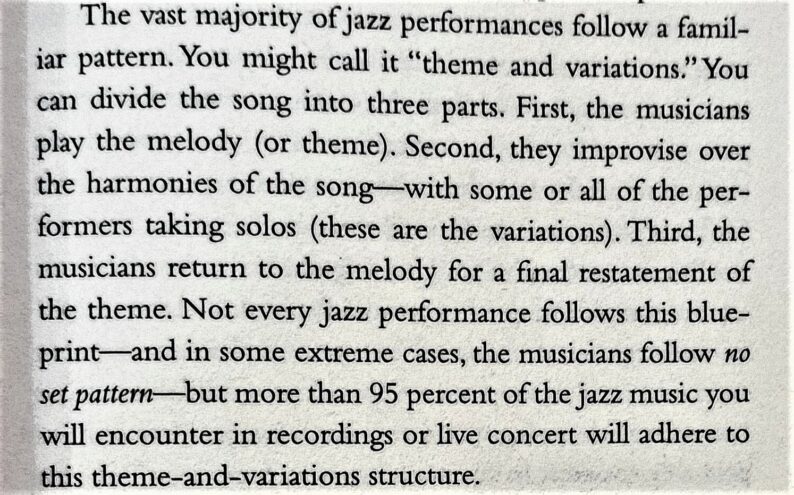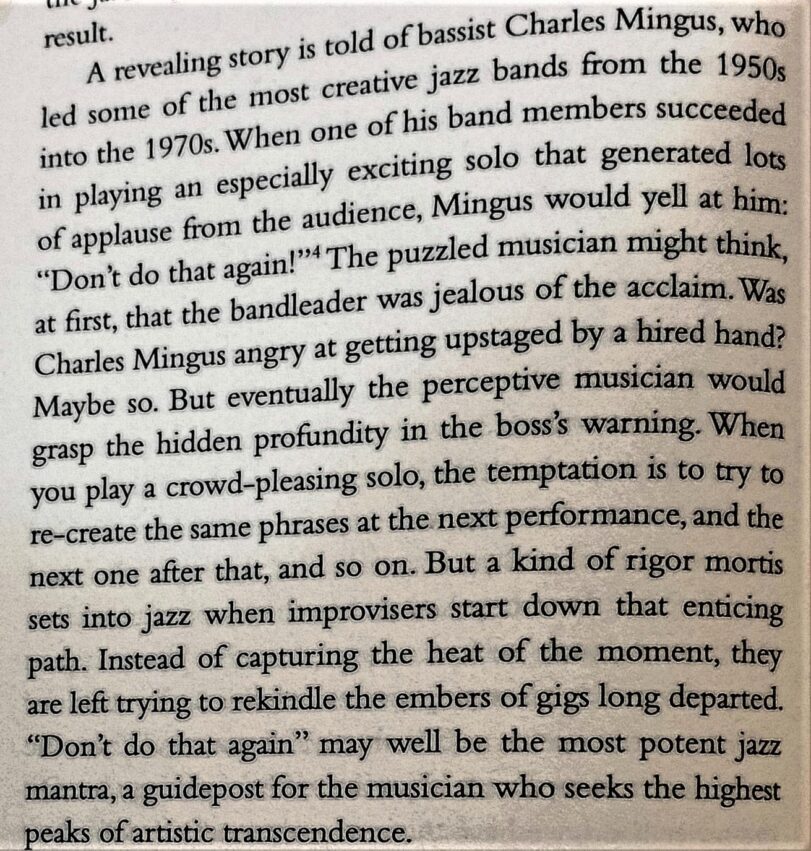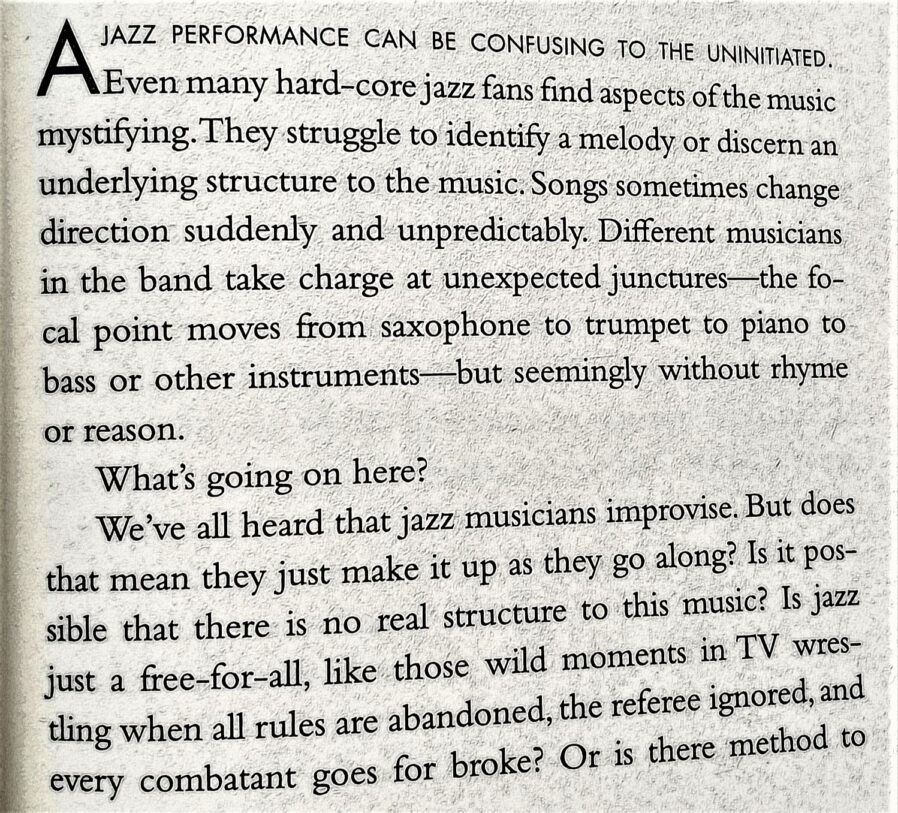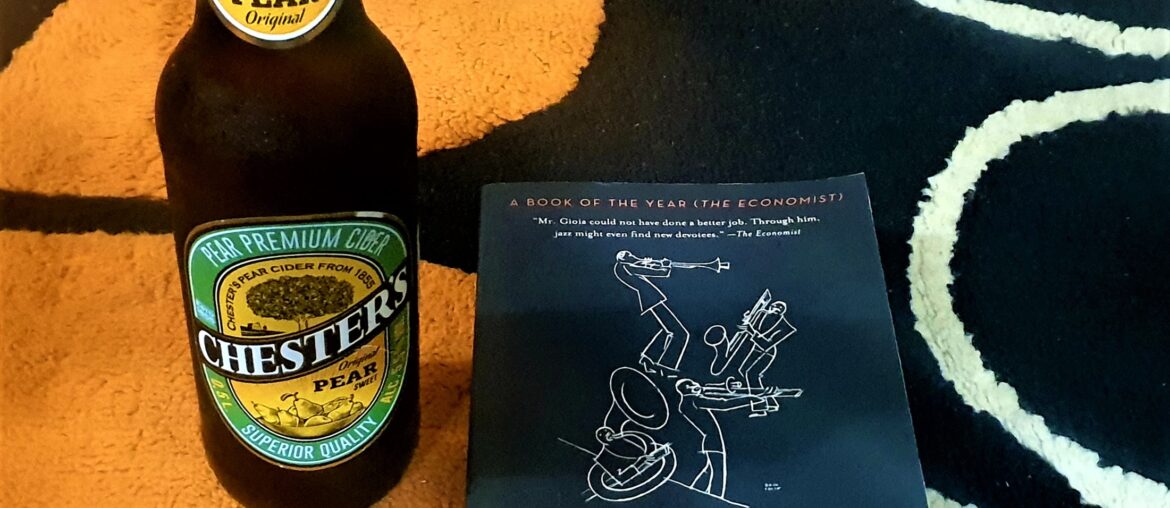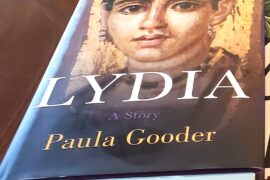A jazz performance can be confusing not just for the uninitiated but even a regular listener who has no extensive knowledge of the art form. To an untrained ear, it is often hard to identify a melody or even its structure. The whole premise of How to Listen to Jazz is to act as an introduction that explains the art form as more than a sequence of notes with an underlying structure that supports the burst of sustained or spontaneous artists’ creativity.
For a reader like myself with absolutely no musical knowledge of any sort, all I approached the book with was a boundless passion for the art form of jazz music and with that alone, I found How to Listen to Jazz to be very readable and informative. I may still struggle with counting the bars and beats that underline the structure of my favourite jazz tunes but at least now I know what to look for when trying to grasp the music maps of that sort.
Every year I try to pick out jazz literature to deepen my understanding of the art form. I feel this makes sense as over 95% of my listening pleasure is populated by jazz tunes and (before COVID-19) I spent a good portion of my travelling itinerary at jazz festivals and jazz clubs. The common theme that runs through these books is that they introduce me to new tunes, relate incredible anecdotes that make for richer listening pleasure as you are exposed to the background stories that birthed favourite tunes. While I found the Structure of Jazz chapter in How to Listen to Jazz most challenging and informative, the anecdotes that filled the book in chapters dealing with the evolution of jazz styles and the origin of jazz were highly entertaining and educative. A favourite anecdote of mine is the story of the pistol that Jelly Roll Morton placed on the piano, which settled his quarrel with his trombonist. This story was a side attraction to the comparison/similarity between Morton’s Sidewalk Blues and Duke Ellington’s Sepia Panorama.
This is an enjoyable read. Ideal for passionate beginners on the jazz journey, highly informative and you are sure to end it with a bulging playlist of classics that you have either not heard before or not listened to in a long while.
3.5/5
